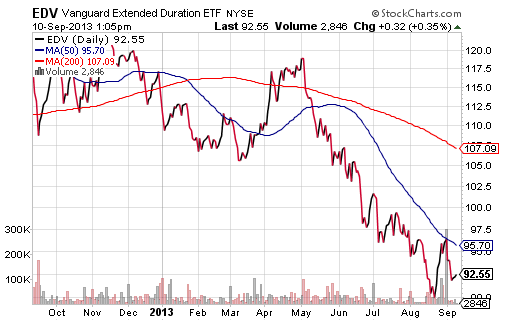Nearly 12 years of ultra-easy, unconventional monetary policy in Japan have led to some of the lowest yielding bonds in the world. Specifically, the Bank of Japan (BOJ) had hoped that — by printing yen — its currency would lose value such that export demand would increase. Moreover, by simultaneously using the new-found yen to purchase government debt obligations, the subsequent decline in yields would encourage borrowing and spending.
Here in 2013, however, it is difficult to see the success of Japan’s experimentation. In spite of a general trend of declining longer-term yields, the wages of Japanese workers have been stagnant for more than a decade. Of course, any debts that those employees hold are mostly fixed, leaving each with less money to live on annually. Similarly, if wages fall and if prices of goods fall because businesses need to sell inventory — a condition called deflation — the result is an economy stuck in neutral or worse.
While any comparison between the United States and Japan is suspect, the similarities should not be ignored either. For example, wage deflation has been a significant challenge for the U.S. Federal Reserve over the five-year course of American quantitative easing (QE); household income has been declining while the cost of living has been increasing. Not surprisingly, the U.S. continues to grow its economy at an alarmingly slow rate. Similarly, the Fed has struggled to meet a moderate inflation target of 2.0%, leading some to support the case that we remain mired in a state of deflationary stress.
There has been at least one significant difference, however. Over the course of Japan’s efforts to enhance its economic prospects, the yields on Japanese Government Bonds (a.k.a. “JGBs”) have largely been contained. This is a good thing for believers in the “Land of the Rising Sun” because the country boasts the worst debt-to-GDP level of any country on earth. American investors, however, are a less patient and less docile bunch. When our Fed hinted slowing down its ultra-accommodating monetary policy in May, 10-year Treasury interest rates spiked from 1.6% to nearly 3.0%!
Conservative/moderate investors in America have been dumping bond holdings right and left. Worse yet, bonds of all stripes — mutual fund, ETF, individual, short, long, intermediate, taxable, tax-free — are finding it difficult to attract any buyers; outflows on bond funds/ETFs were epic in August. In fact, it is downright scary to consider what the yields might be today were it not for the U.S. Fed purchasing $85 billion per month.
And that brings us back to the Fed’s decision on whether or not to “taper” their bond purchasing from $85 billion per month to $65 billion or $75 billion. Keep in mind, these are levels that are consistent with QE2 from the Fed a few years back… a point that the Fed is likely to emphasize to persuade folks that they are still working hard to keep longer-term bond yields extraordinarily low.
The problem? Investors appear to be losing patience as well as faith. One look at the 20%-25% bearish losses on funds like iShares 20 Year Treasury (TLT) and Vanguard Extended Duration Treasury (EDV), and one recognizes the challenges that currently face buy-n-holders of “safe haven” bonds. EDV has not been able to seriously challenge a 50-day short-term trendline since the Fed’s “taper talk” in May.
Next page: Bond trends
